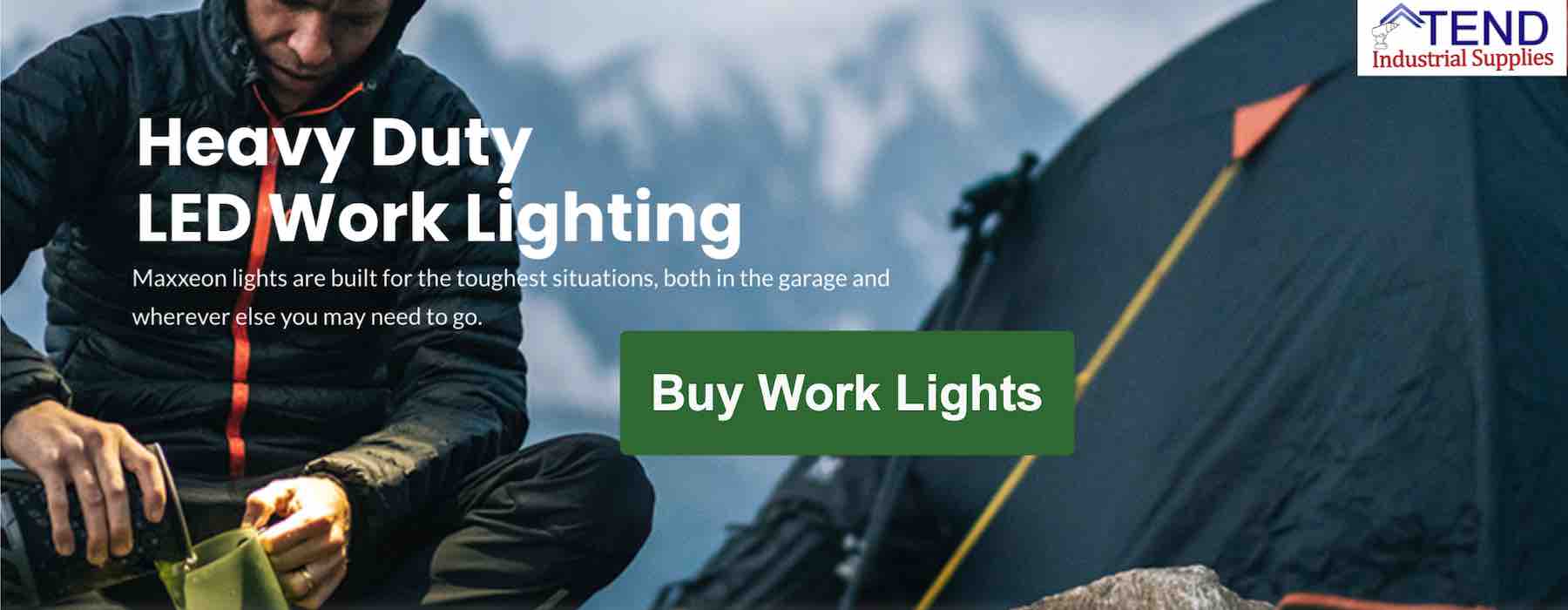How Long Do Rechargeable Light Bulbs Last: A Comprehensive Guide
Rechargeable light bulbs have emerged as a noteworthy development in the realm of sustainable and innovative lighting solutions. These bulbs, distinguished by their ability to store electrical energy for use when the main power supply is off, represent a blend of convenience and efficiency. Understanding their lifespan is crucial for consumers seeking reliable and eco-friendly lighting options. This guide provides a detailed exploration of rechargeable light bulbs, their durability, and factors influencing their lifespan,
Key Takeaway: Rechargeable Light Bulb Lifespan
Rechargeable light bulbs offer an impressive lifespan of 25,000 to 50,000 hours, significantly outlasting traditional incandescent bulbs. This longevity, combined with their energy efficiency and emergency power functionality, makes them a smart investment for both residential and commercial use. While the initial cost may be higher, the long-term savings in energy bills and replacement costs make rechargeable bulbs an economical choice. To maximize lifespan, proper charging practices and regular maintenance are crucial. As technology advances, we can expect even longer-lasting and more efficient rechargeable bulbs in the future, further cementing their place in sustainable lighting solutions.
How Long Do Rechargeable Light Bulbs Last
Ensuring you make an informed decision when choosing these for your home or workplace. This comprehensive guide aims to illuminate the key aspects of rechargeable light bulbs, from their basic functioning to the factors influencing their lifespan. Understanding these nuances not only helps in making informed purchasing decisions but also ensures optimal usage and longevity of these innovative lighting solutions.
Understanding Rechargeable Light Bulbs
Definition and Basic Technology
Rechargeable light bulbs are LED lights equipped with an internal battery that can be charged and used without a continuous power supply. The fundamental technology behind these bulbs is similar to regular LED lights but with the added feature of a rechargeable battery. When the power goes out, these bulbs continue to illuminate using the stored energy, making them ideal for power outages and emergencies.
Types of Rechargeable Light Bulbs Available in the Market
The market offers various rechargeable light bulbs, each suited to different needs and preferences. Some common types include:
- Standard Rechargeable LED Bulbs: These are the most common and are used in regular light fixtures.
- Portable Rechargeable Bulbs: Designed for mobility, these can be used as flashlights or camping lights.
- Smart Rechargeable Bulbs: These can be controlled via smartphone apps and often feature color-changing options.
Factors Influencing the Lifespan of Rechargeable Light Bulbs
The durability of rechargeable light bulbs is affected by several factors:
Quality of the Bulb
High-quality bulbs with superior components generally last longer. The brand and manufacturing standards are crucial in determining the bulb's longevity.
Frequency of Use
The more frequently a bulb is used, its internal components, including the battery, may degrade quicker.
Charging Habits and Methods
Proper charging practices, such as avoiding overcharging and using the right type of charger, are essential for prolonging bulb life.
Environmental Factors
Temperature and humidity can significantly impact the lifespan of rechargeable light bulbs. Extreme conditions can damage the bulb’s components, reducing its overall life expectancy.
Average Lifespan of Rechargeable Light Bulbs
Light Bulb Lifespan Comparison: Rechargeable vs. Traditional Options
| Bulb Type | Average Lifespan (hours) | Energy Efficiency | Initial Cost | Long-term Cost | Emergency Use |
|---|---|---|---|---|---|
| Rechargeable LED | 25,000 - 50,000 | Excellent | High | Low | Yes |
| Standard LED | 15,000 - 25,000 | Excellent | Medium | Low | No |
| CFL | 6,000 - 15,000 | Good | Low-Medium | Medium | No |
| Halogen | 2,000 - 4,000 | Fair | Low | High | No |
| Incandescent | 750 - 2,000 | Poor | Very Low | Very High | No |
Notes:
- Lifespan varies based on usage patterns and environmental factors.
- Energy efficiency directly impacts long-term cost.
- Rechargeable LEDs offer unique benefits in emergency situations.
- Initial costs are offset by long-term savings for more efficient options.
This comparison clearly illustrates the superior lifespan and overall value of rechargeable LED bulbs compared to traditional lighting options.
General Statistics on Lifespan
On average, rechargeable light bulbs have a lifespan ranging from 25,000 to 50,000 hours. This range can vary based on the factors discussed earlier.
Comparison with Traditional Light Bulbs
Compared to traditional incandescent bulbs, which typically last around 1,000 hours, rechargeable bulbs offer a significantly longer lifespan. Even when compared to standard LED bulbs, rechargeable ones often have a similar or slightly longer lifespan.
Maximizing the Lifespan of Your Rechargeable Light Bulbs
Innovative Tips for Extending Rechargeable Light Bulb Lifespan
- Smart Charging Schedules:
- Use smart plugs to automate charging cycles
- Implement a "80-20" rule: Charge to 80%, discharge to 20% for optimal battery life
- Temperature Management:
- Install heat-dissipating fixtures to reduce bulb temperature
- Use smart thermostats to maintain optimal room temperature for bulb longevity
- Usage Optimization:
- Implement motion sensors for automatic on/off in low-traffic areas
- Use dimming features to reduce power consumption and heat generation
- Environmental Protection:
- Apply UV-resistant coatings on bulbs used in direct sunlight
- Use dehumidifiers in high-humidity areas to protect bulb components
- Regular Health Checks:
- Use smartphone apps to track bulb performance and charging cycles
- Perform monthly visual inspections for signs of wear or damage
- Proper Cleaning Techniques:
- Use compressed air to remove dust without physical contact
- Apply anti-static sprays to reduce dust accumulation
- Voltage Regulation:
- Install voltage stabilizers to protect against power fluctuations
- Use surge protectors specifically designed for LED lighting
- Eco-Mode Utilization:
- Activate built-in eco-modes during off-peak hours
- Use daylight sensors to adjust brightness based on natural light availability
By implementing these innovative strategies, you can significantly extend the lifespan of your rechargeable light bulbs, maximizing your investment and reducing environmental impact.
Best Practices for Charging and Usage
To extend the life of your rechargeable light bulbs, follow these charging best practices:
- Avoid Overcharging: Disconnect the bulb once fully charged to prevent battery degradation.
- Use Regularly: Regular use ensures the battery cycles correctly, maintaining its health.
Tips for Maintenance and Storage
- Clean Regularly: Dust and debris can hamper bulb efficiency. Clean the bulbs gently with a dry cloth.
- Proper Storage: Store in a cool, dry place away from direct sunlight when not in use.
Proper Disposal
Once a rechargeable bulb is beyond use, dispose of it responsibly:
- Recycling Centers: Many centers accept bulbs for recycling.
- Follow Local Guidelines: Check local regulations for proper disposal methods.
Signs That Your Rechargeable Light Bulb Needs Replacement
Dimming Light
A noticeable decrease in brightness could indicate the bulb is nearing the end of its lifespan.
Reduced Efficiency in Charging
If the bulb holds a charge for a shorter duration than usual, it's a sign of battery wear.
Physical Damage
Look for any visible damage, such as cracks or loose components, as these can affect performance.
Choosing the Right Rechargeable Light Bulb for Your Needs
Factors to Consider
When selecting a rechargeable light bulb, consider:
- Brightness (Lumens): Choose brightness levels suitable for your space.
- Size and Fit: Ensure the bulb fits your fixtures.
- Brand Reputation: Opt for brands known for quality and reliability.
Recommendations for Different Use-Cases
- Home Use: Soft white LED bulbs are ideal for a cozy home environment.
- Outdoor Use: Look for bulbs with higher lumens and durability.
- Commercial Use: Energy-efficient bulbs that can handle prolonged use are preferable.
Find the Perfect Rechargeable Light Bulb for Your Needs on TendSupplies.com
The Future of Rechargeable Light Bulbs
As we look toward the future, rechargeable light bulbs are set to play a pivotal role in the lighting industry.
Innovations in the Field
Advancements in battery technology and energy efficiency are constantly emerging, promising even longer-lasting and more versatile rechargeable bulbs. Innovations like smart connectivity and improved charging methods are on the horizon.
Sustainability and Environmental Impact
Rechargeable light bulbs are a step forward in reducing environmental impact. Their longevity and energy efficiency align with global sustainability goals, making them a responsible choice for eco-conscious consumers.
Eco-Friendly Lighting: The Impact of Rechargeable LED
The Future of Rechargeable Light Bulb Technology: Emerging Trends
As we look towards the future, several exciting developments are set to revolutionize rechargeable light bulb technology:
- Graphene-Enhanced Batteries:
- Potential to increase charge capacity by up to 45%
- Could extend bulb lifespan to 75,000+ hours
- Self-Healing Materials:
- Nano-coatings that repair minor damage automatically
- May increase bulb durability by 30%
- Artificial Intelligence Integration:
- AI-powered usage prediction for optimized charging cycles
- Could improve energy efficiency by up to 25%
- Quantum Dot Technology:
- Enhanced color rendering and brightness
- Potential to increase light output while reducing energy consumption
- Wireless Charging Capabilities:
- Inductive charging built into light fixtures
- Eliminates the need for manual recharging
- Biodegradable Components:
- Eco-friendly materials for reduced environmental impact
- Easier recycling and disposal at end-of-life
- Energy Harvesting:
- Integration of small solar cells or kinetic energy harvesters
- Supplemental charging for extended use between main charges
- Smart Home Ecosystem Integration:
- Seamless connectivity with other smart home devices
- Automated optimization based on user behavior and preferences
These advancements promise to make rechargeable light bulbs even more efficient, durable, and environmentally friendly. As technology progresses, we can expect these bulbs to play an increasingly significant role in both residential and commercial lighting solutions.
Conclusion
This guide has journeyed through the essentials of rechargeable light bulbs, from understanding their technology to maximizing their lifespan and choosing the right one for your needs. The key takeaway is that these bulbs are not only a smart investment for their longevity but also for their positive environmental impact.
Rechargeable light bulbs are more than just a lighting solution; they represent a shift towards more sustainable, efficient, and innovative living spaces. Join us in embracing this bright future! We invite you to explore the diverse range of rechargeable light bulbs available at Tend Industrial Supplies. These innovative lighting solutions cater to a variety of needs and preferences, ensuring you find the perfect fit for your space.
Additionally, stay informed and inspired by subscribing to our newsletter. You'll receive more guides, updates, and insights into the world of eco-friendly and advanced lighting solutions.










